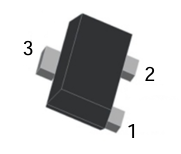How to Use Small Signal Transistors
Date:2025-05-28 Categories:Product knowledge Hits:291 From:Guangdong Youfeng Microelectronics Co., Ltd
Small signal transistors are fundamental components in electronic circuits, primarily used for amplifying low-power signals or serving as switches in signal processing applications. Understanding their proper usage is crucial for designing and implementing effective electronic systems. Here’s a comprehensive guide on how to use small signal transistors.
Small signal transistors are defined by their capability to handle relatively low currents (typically up to 100mA) and voltages, making them suitable for signal amplification rather than power conversion. The two main types are NPN and PNP transistors, which differ in their current flow directions and biasing requirements. Key parameters to consider include the current gain (hFE or β), maximum collector current (IC), collector-emitter voltage (VCE), and frequency response (fT), as these determine the transistor’s performance in specific circuits.
Circuit Configuration
Common Emitter Configuration
Small signal transistors This is the most widely used configuration for signal amplification, offering a good balance of voltage and current gain. In this setup, the emitter is common to both the input and output circuits. To implement it, connect the base terminal to the input signal through a coupling capacitor to block DC components, and place a load resistor (RC) between the collector and the supply voltage (VCC). The output signal is taken from the collector, inverted in phase relative to the input. For example, in an audio preamplifier, a common emitter configuration with a 2N2222 NPN transistor can amplify weak audio signals from a microphone.

Previous:
Classification, Structure, and Principle of MOSFET
Next:
Common Base Configuration
